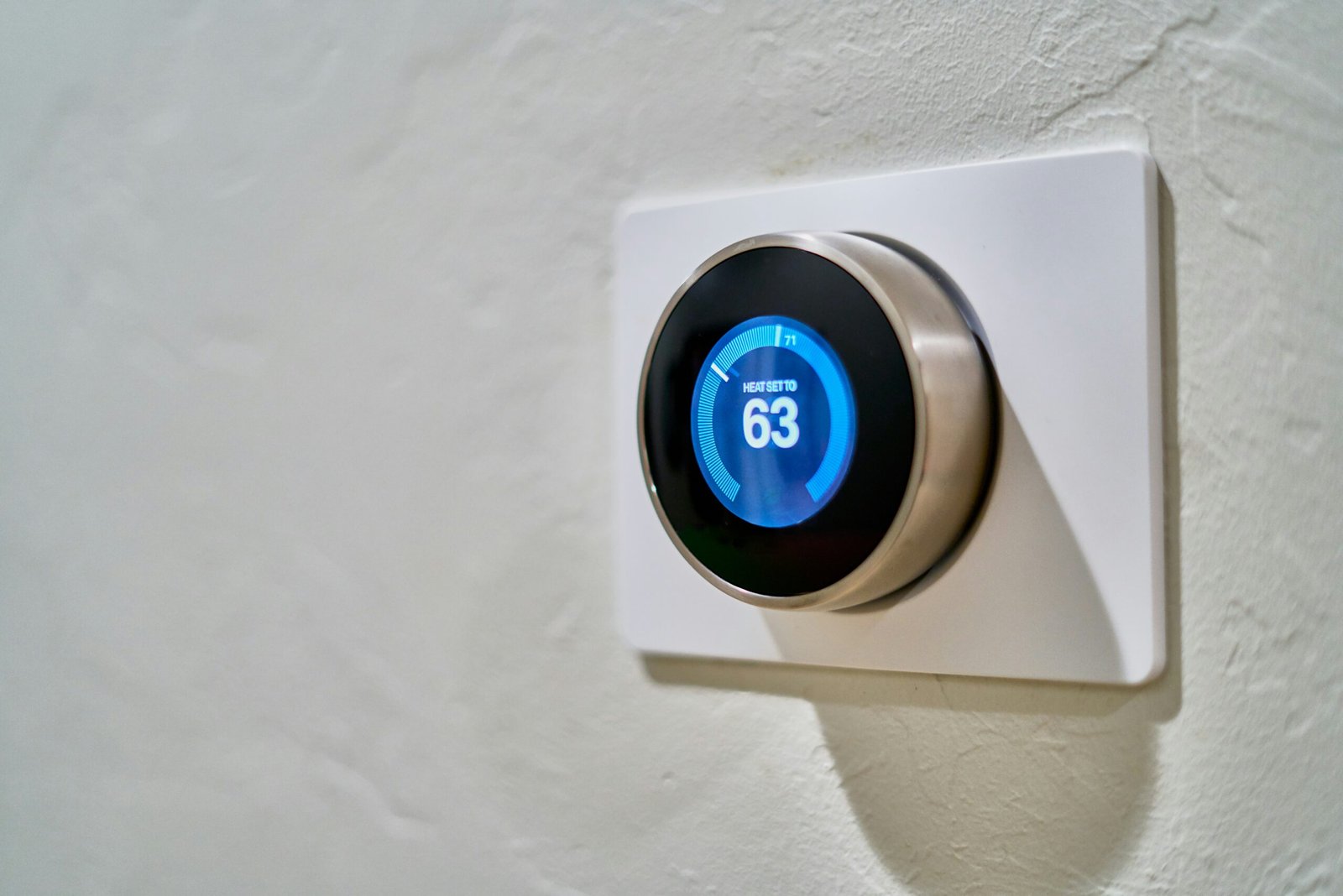Introduction to Smart Home Technology
Smart home technology refers to a range of devices and systems that can be programmed, monitored, and controlled remotely through the internet.
These technologies are designed to enhance the convenience, efficiency, and security of residential environments, thereby transforming traditional homes into intelligent living spaces.
The integration of smart devices such as smart speakers, thermostats, lighting systems, and security cameras facilitates automation and remote management, ensuring that homeowners can monitor and control their home environment effortlessly.
The relevance of smart home technology in today’s market is underscored by its rapid growth and adoption.
According to a recent report, the global smart home market is expected to reach several billion dollars within the next few years.
Factors contributing to this expansion include increased consumer awareness of energy efficiency, advancements in connectivity, and the rising need for home security solutions.
As more individuals seek to streamline their lifestyles, the demand for smart home devices is surging, thereby presenting significant opportunities for manufacturers and sellers alike.
Moreover, the integration of these devices into daily life showcases how they create more secure and efficient living environments.
For instance, smart home technologies allow users to control their lighting and climate settings through mobile applications, leading to improved energy management.
Additionally, security systems equipped with smart features provide real-time monitoring and alerts, enhancing the safety of households.
The ongoing trend of automation also plays a crucial role, as it encourages users to adopt technologies that make routine tasks simpler and more straightforward.
The future of smart home technology is bright, with continuous innovations paving the way for smarter solutions.
Companies that export from India and other nations are increasingly recognizing the potential in this sector, positioning themselves to capitalize on the growing demand for smart export house products that align with modern consumer needs.
Current Market Trends in Smart Home Technology
The smart home technology market is experiencing a remarkable transformation, driven by various trends that reflect both consumer demand and technological advancements.
One of the most significant developments is the increasing adoption of Internet of Things (IoT) devices. IoT enables interconnected devices to communicate and automate tasks, enhancing convenience in everyday living.
As a result, households around the globe are increasingly incorporating smart appliances, security systems, and lighting solutions that can be controlled remotely, contributing to the growth of the smart export house model.
Another pivotal trend is the rising demand for energy-efficient products. As consumers become more eco-conscious, many opt for smart home technologies that promote energy savings and reduce utility costs.
Devices such as smart thermostats and energy-efficient lighting solutions not only provide operational efficiency but also align with sustainability goals, which are becoming increasingly important in export from India.
This focus on energy efficiency is reshaping product development, with manufacturers prioritizing sustainable materials and design.
The integration of artificial intelligence (AI) into smart home systems is also notable. AI enables devices to learn user preferences, predict needs, and enhance automation capabilities.
This advancement not only improves user experience but also creates a competitive edge for manufacturers in the global market. Moreover, consumer behaviors are evolving as individuals become more familiar with technology.
They are seeking solutions that offer not only convenience but also security and customization, leading to a demand for more sophisticated smart home systems.
Geographically, urban areas in developed nations continue to dominate the smart home technology market.
However, emerging markets demonstrate significant potential for growth.
As infrastructure improves and income levels rise, opportunities for exporting smart home technology from India are expanding, presenting new avenues for innovation and investment in this dynamic sector.
Export Potential of Smart Home Products
The export potential of smart home products presents a promising opportunity for manufacturers, especially in a dynamically evolving market.
As global consumers increasingly prioritize convenience, security, and energy efficiency in their living environments, the demand for smart home technology has surged.
Products such as smart lighting systems, automated security cameras, and intelligent climate controls are at the forefront of this trend.
As these products gain popularity, exporting from India is becoming more viable for manufacturers looking to enhance their reach and profitability.

Several factors contribute to the growing international demand for smart home products.
Firstly, rising disposable incomes in emerging markets enable consumers to invest in such technologies, thus making them more accessible worldwide.
Furthermore, the shift towards energy-efficient solutions resonates with environmentally conscious consumers, propelling the growth of smart home appliances.
As a result, manufacturers must align their offerings with these evolving consumer preferences to cater to diverse markets.
However, manufacturers intending to export smart home technology must navigate various considerations, including trade regulations and compliance with international standards.
Understanding and adhering to these regulations is paramount to ensure smooth market access and minimize delays.
Different countries may impose specific certifications and technical requirements on smart home devices, making it essential for exporters to conduct due diligence before entering new markets.
In addition to regulatory compliance, companies should also consider the competitive landscape of target markets.
Identifying key competitors and understanding their product offerings can provide valuable insights into market positioning strategies.
Overall, the potential for an export house specializing in smart home products is significant, driven by both consumer demand and technological advancements.
By leveraging these insights and understanding the complexities involved, manufacturers can successfully capitalize on export opportunities in the smart home technology sector.
Key Players in the Global Smart Home Market
The global smart home technology market is witnessing rapid growth, with several key players contributing to its expansion.
This industry is characterized by established brands and innovative startups, each adopting varied strategies to capture market share.
Prominent companies such as Amazon, Google, and Apple lead the sector with their comprehensive ecosystems and advanced smart home devices.
Amazon holds a significant position in the smart home market, primarily due to its Echo line of products, powered by Alexa.
The company has continuously evolved its offerings, providing users with seamless integration across numerous devices, appealing to a broad consumer base.
Similarly, Google’s Nest range of products offers advanced features like smart thermostats and security cameras, ensuring a competitive edge in the marketplace.
These established firms not only dominate market share but also set the trends in smart home technology through substantial research and development investments.
In addition to these giants, the landscape is increasingly populated by innovative startups that aim to disrupt traditional approaches.
Companies such as Ecobee and Wyze are gaining traction by offering cost-effective solutions without compromising functionality.
These startups often tap into niche markets, focusing on energy efficiency or specific user needs, thereby contributing to the diversification of products available for consumers.
The international expansion of these companies plays a crucial role in the dynamics of the global smart home market.
To export from India, many firms are creating smart export houses that facilitate the introduction of local brands to international markets. By doing so, they leverage the rising demand for smart home technology across various regions.
Whether from established companies or emerging startups, the ongoing innovation and market penetration efforts underscore the vibrant nature of this industry, ultimately benefiting consumers worldwide.
Challenges in Exporting Smart Home Technology
Exporting smart home technology presents a range of challenges that businesses must navigate to establish a successful international presence.
One significant hurdle involves regulatory barriers, which can differ vastly between countries.
Each nation has its own standards for technology, security, and data privacy, requiring businesses to stay compliant with these regulations to avoid legal issues.
For instance, smart devices often need to meet specific safety requirements before being approved for sale in foreign markets, engaging in a rigorous certification process.
In addition to regulatory concerns, variations in consumer preferences present another challenge.
Preferences for smart home technology can vary significantly across cultures and regions.
For example, while energy efficiency is a top priority for consumers in some markets, others may prioritize ease of use or aesthetic design.
This necessitates that exporters adapt their products and marketing strategies to cater to the specific needs and desires of different demographics—an approach that can be resource-intensive and complex.
Logistical hurdles also play a critical role in the export process. Efficient distribution channels must be established to ensure timely delivery and competitive pricing.
The complexities of international shipping, including customs procedures, tariffs, and potential delays, can complicate the logistics of exporting smart home technology.
Companies must carefully plan their supply chains to minimize disruptions and ensure that their products are readily available in target markets.
Lastly, competition from local brands poses a substantial challenge for businesses looking to export from India.
Local manufacturers often have an established presence in the market and a deeper understanding of consumer behavior.
To counteract this competition, exporters may need to emphasize their unique selling propositions, such as innovative features or superior quality, thereby appealing to consumers and carving out a niche in the market.
Emerging Markets for Smart Home Technology
The global landscape for smart home technology is rapidly evolving, with emerging markets presenting significant opportunities for companies looking to export from India.
Regions such as Southeast Asia and Africa are becoming increasingly attractive due to a combination of factors that are fostering an environment conducive to the adoption of smart home solutions.
One of the primary factors driving this trend is urbanization.
As more individuals migrate to urban areas in search of better economic prospects, the demand for modern amenities is on the rise.
Urban consumers are increasingly seeking advanced home technologies that enhance convenience, security, and energy efficiency.
This surge in urban living creates a potential customer base that is tech-savvy and willing to invest in smart home products.
Moreover, as cities develop, there is a growing need for infrastructure that supports smart technologies, making these markets ideal for export opportunities for a smart export house.
Improved internet access plays a crucial role in the proliferation of smart home technology in these regions.
With the advent of affordable internet solutions and mobile connectivity, consumers are becoming more connected than ever.
This digital transformation allows for the seamless integration of smart products into everyday life, making smart home technologies more accessible to a larger audience.
As a result, the market for smart devices is burgeoning, and companies exporting from India can capitalize on this trend.
Additionally, economic development in these regions is paving the way for increased disposable income among consumers.
As financial stability improves, more households are willing to invest in innovative home solutions that promise enhanced quality of life.
This changing economic landscape highlights the importance of positioning smart home technology strategically to meet the evolving consumer preferences in emerging markets.
Future Opportunities in Smart Home Technology Exports
The smart home technology sector is poised for significant advancements that will create ample export opportunities in the coming years.
Innovations, such as the Internet of Things (IoT), artificial intelligence, and machine learning, are continuously enhancing smart home devices.
These technologies facilitate seamless interconnectivity and automation of home systems, capturing the interest of global consumers.
As a result, the demand for smart home technologies is expanding internationally, presenting a robust avenue for smart export houses in India to capitalize on.
Moreover, evolving consumer preferences play a critical role in shaping the future of smart home technology exports.
Consumers are increasingly leaning towards solutions that offer convenience, security, and energy efficiency.
This paradigm shift paves the way for smart home products that integrate seamlessly into daily life.
Exporting companies can focus on designing and marketing devices that resonate with modern lifestyles, catering to diverse demographics, including tech-savvy millennials and busy families.
The ability to adapt products to meet these changing preferences provides an edge in the competitive export market.
In addition, the sustainability movement is gaining momentum, influencing consumer choices heavily.
Individuals are now more inclined towards eco-friendly solutions that reduce energy consumption and carbon footprints.
This trend presents an exceptional opportunity for smart export houses to penetrate niche markets by offering smart devices designed for energy management and environmental sustainability.
Products that assist with water conservation, renewable energy management, or energy-efficient appliances can attract environmentally conscious consumers, enhancing market reach and profitability.
Ultimately, as the smart home technology landscape evolves, there are vast possibilities for forward-thinking exporters who can navigate technological trends, consumer demands, and sustainability initiatives.
Engaging in these emerging markets will position exporters from India at a significant advantage, ensuring a prominent role in the global smart home technology arena.
Strategies for Successful Exporting
Exporting smart home technology is a lucrative opportunity for businesses aiming to expand their market reach. However, entering a new market requires a strategic approach.
One of the foremost strategies is conducting thorough market research. Understanding the local demand, regulatory environment, and competitive landscape is critical.
Companies should analyze consumer preferences and technological adoption rates to tailor their offerings effectively.
Gathering this data empowers smart export houses to make informed decisions about which markets to enter and how to position their products.
Building local partnerships is another essential strategy for successful exporting.
Collaborating with local distributors, retailers, and service providers helps to gain insights into the market and establish trust with potential customers.
These partnerships often facilitate smoother market entry and can enhance brand visibility. Local partners can also offer logistical support and navigate regulatory processes, ensuring compliance with local laws when exporting from India.
Customization of products for specific markets cannot be overlooked. Different regions may have distinct needs and preferences when it comes to smart home technology.
For instance, variations in language, culture, and living conditions can influence how consumers interact with smart devices.
Adapting features, interfaces, and even marketing messages to align with local expectations is vital in attracting customers and ensuring successful product launches.
Effective marketing strategies play a key role in the success of exporting smart home technology.
Companies should leverage digital marketing techniques, maximize social media engagement, and utilize regional influencers to build brand awareness.
Success stories from industry leaders can serve as powerful marketing tools, illustrating the reliability and value of products.
By following these strategies, smart export houses can navigate the complexities of international markets, ultimately leading to successful exports and expanded revenue opportunities.
Conclusion and Call to Action
As the global market increasingly shifts towards smart home technology, understanding the trends and opportunities in this sector for export from India becomes paramount for stakeholders.
This blog post has highlighted the significant growth trajectory of the smart home technology market, emphasizing the advantages of exporting such innovative products.
The advent of advanced IoT devices and integration capabilities not only enhances consumer convenience but also presents lucrative avenues for smart export houses.
The rise of smart home solutions, including security systems, energy management tools, and automated appliances, points towards a broader acceptance of these technologies worldwide.
This acceptance opens the door for Indian manufacturers and exporters to harness this potential. Key trends such as sustainability and connectivity have been identified as crucial drivers, guiding export strategies.
By leveraging India’s manufacturing capabilities and expertise in technology, smart export houses can position themselves competitively in the global marketplace.
To capitalize on these insights, it is essential for stakeholders—including manufacturers, marketers, and investors—to adopt a proactive approach in exploring export opportunities.
Engaging in market research to understand international demand, establishing partnerships with local distributors, and participating in trade shows are strategic steps that can facilitate successful market penetration.
Additionally, adapting products to meet diverse regulatory requirements and consumer preferences is vital in ensuring compliance and satisfaction.
In closing, embracing the prospects within the smart home technology export sector is not merely advantageous but essential for sustained growth.
We encourage all stakeholders to reflect on the insights presented, assess their current strategies, and take actionable steps towards entering global markets.
By doing so, they can ensure they remain competitive and contribute to India’s reputation as a leading smart export house.






No comment yet, add your voice below!